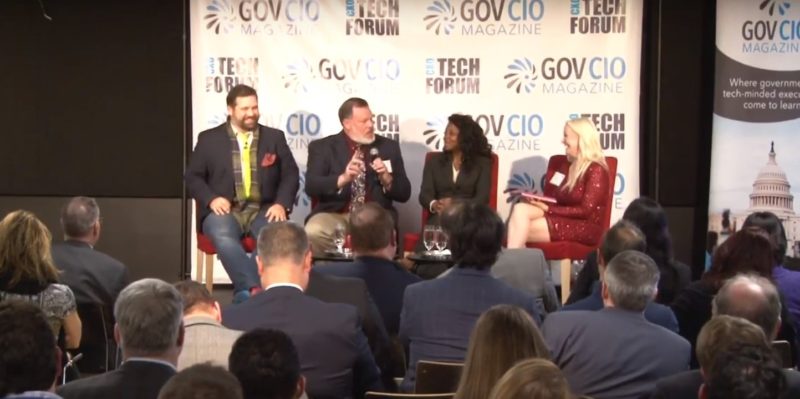
In December, GovernmentCIO Magazine hosted its second CXO Tech Forum, placing government’s blossoming use of artificial intelligence front and center. The event featured panels of public and private sector experts discussing how this technology could revolutionize the federal government.
One panel, moderated by GovernmentCIO Magazine Editor-in-Chief Camille Tuutti, featured General Services Administration Emerging Citizen Technology Office lead Justin Herman; National Institute of Standards and Technology senior scientist Michael Garris; and former White House Deputy Chief Information Officer and current Xerox Chief Information Security Officer Alissa Johnson.
Speakers were given the opportunity to explain the role of AI in their organizations. Johnson said she looks at AI from a perspective of information security. The areas of application for her are “in allowing AI to do better things, more things, bigger things for us so that we can allow our resources to work on higher level, higher-risk tasks and allow AI to fill in that cybersecurity talent gap we’ve all heard about,” Johnson said.
Garris approached the subject from a coordination perspective, saying his focus is on coordinating AI programmatically across the various domains and disciplines of NIST to better provide metrics and measures of trustworthiness for future use.
Herman said his involvement in AI focuses on helping federal agencies create roadmaps for using the technology. Herman described the Emerging Citizen Technology program as “we put together governmentwide programs and interagency efforts in order to start building those roadmaps for the first time.”
Herman shifted the topic of discussion by talking about the chasm between fiction and reality when it comes to government’s AI use.
“The worst thing is for you to walk away thinking that AI is some intangible future state instead of looking at the absolute practical things that could be done today core to IT modernization,” he said.
Responding to his comment, Johnson said AI isn’t an intangible future, “but it is very disruptive.” Johnson added this disruptive nature of the technology stresses the need for public-private partnerships to put structure in place and provide examples in which the technology has succeeded or failed. Doing so might lessen some of the hesitation around AI use.
Johnson then attributed much of that hesitation around AI to misunderstandings and people’s inability to grasp the technology.
“A lot of people think AI and automatically think the self-driving cars, and you can’t really fathom that, but you can fathom a chatbot,” she said.
The topic of misconception continued when Herman said, “the whole perception is shaped around general intelligence and what you see in movies and stuff, not at the discrete, unique use cases and applications…”
AI has so many applications and different domains, many users don’t realize they’re already using the technology.
“There’s not a single federal agency, probably not a single federal program, that could not benefit today . . . from some minor application of it,” Herman said.
Tuutti then asked the panelists about any potential threats they have seen from AI.
“Everything comes with its own risks, opportunities, barriers and accelerators, so yes, there are risks associated with AI, especially if we leave it to chance,” Herman said, adding that security and structure must be addressed now.
Garris echoed Herman’s sentiments, saying as an R&D industry, it’s NIST’s job to develop and employ this technology responsibly.
“While we do these responsible things in today’s AI, it’s really going to set a platform for us to be able to address the future,” he said. Johnson added to these threats from a security perspective, saying the biggest threat to AI is data because the success of AI depends on quality data.
To hear more about specific AI use cases and the full panel, click here.
GovernmentCIO Magazine will host its third CXO Tech Forum on March 15, titled “Uncle Sam Meets Silicon Valley.” The event, held at the Dockmaster Building at the Southwest Waterfront, will focus on how federal agencies can embrace and encourage a culture of innovation.

